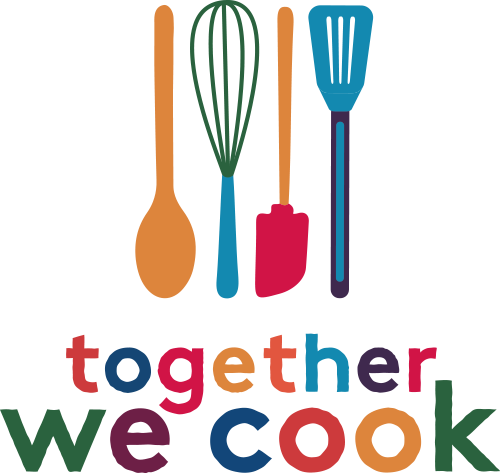Boston, Tea
I have accidentally visited and purchased teas from two of the best tea shops in the world: the iconic gourmet French tea company Mariage Frères, in Paris, and the charming 1835 shop in central Copenhagen, A.C. Perch’s – both offering hundreds of teas and unique blends to leave you wishing you lived next door – but up until this past Sunday, my knowledge of tea was limited to knowing that tea helps with digestion and that black tea has a lot more caffeine than green tea. And that the English are obsessed with tea, of course.
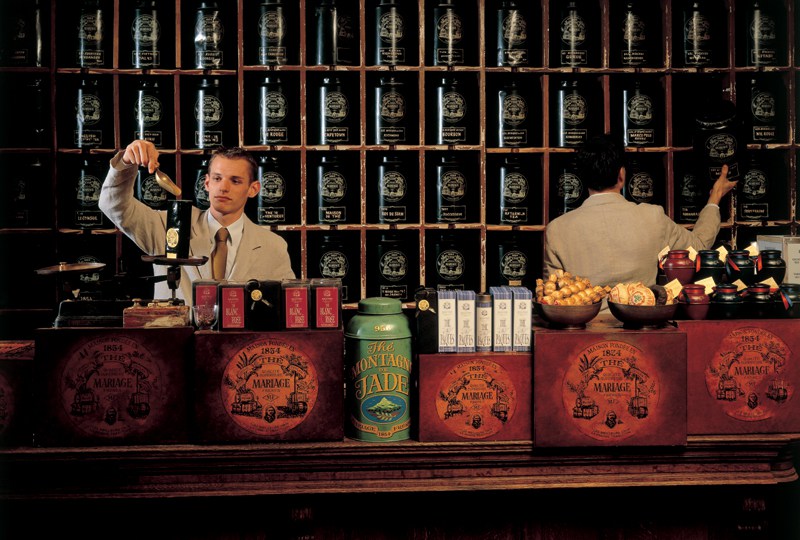
Last Sunday afternoon, however, tea became a lot more exciting to me as we hosted our PTA tea social event as a fundraiser for our kids’ elementary school. We had the opportunity to learn, taste and explore about the ancient practice of tea drinking with a talk given by a parent and tea expert, Brendan, who lived in China for several years and taught courses in Chinese language and culture. The session was followed by a tasting of Pakistani teas led by another parent and tea lover, Shehrish, who shared a bit of Pakistani culture and her own family traditions around tea.
After a brief presentation on the origin, history and types of tea, Brendan brewed a variety of teas from China, Japan and India, starting from the lightest Oolong teas to a few black teas, or red teas, as they are called in China, given the color of liquid after the black leaves are brewed.
One of my favorites, an Oolong tea, had a remarkably sweet aftertaste. Oolong teas are made from semi-oxidized tea leaves and are somewhere in between green and black teas (and probably have just the right amount of caffeine for me). These little tea sampling ceramic cups were perfect for rounds and rounds of tea sampling. 
Brendan acquired an extensive collection of tea pots and a few tea cups while living in Asia. He had a few from China, Japan and Korea on display, including a very fine porcelain tea cup that would break if my two year old even looked at it (I don’t think his wife knows he brought that one). The one that looks like a decorative piece below is carved from stone and has five dragons, which are symbols of good fortune. Brendan explained that Chinese teapots are traditionally made of unglazed clay, which allows for the flavor of your tea to seep into the clay and deepens the flavor of your tea over time (provided you only brew one type of tea per pot – or you would end up with a mix of flavors!).
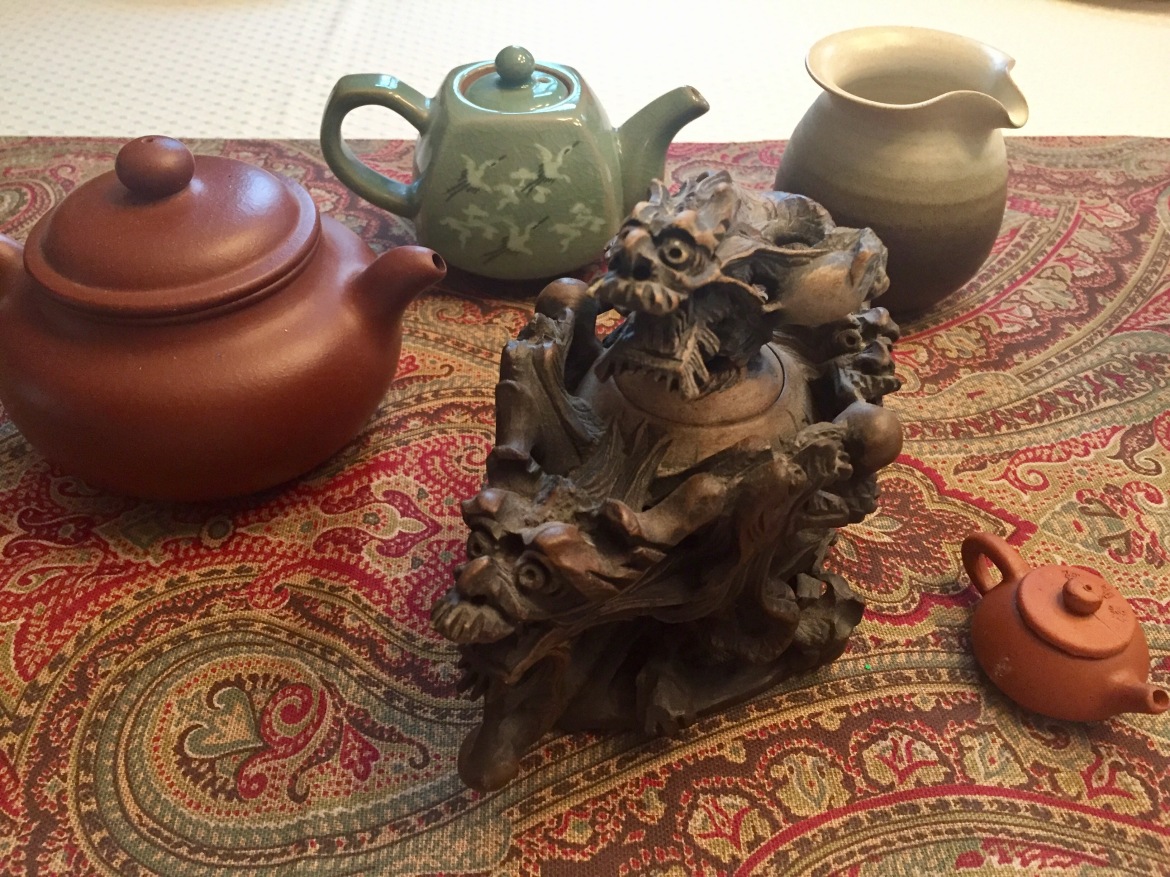
Although all types of tea come from the leaves of the same species of plant, it is at what stage the tea leaves are picked and the methods of processing the leaves that determine whether the tea is white, yellow, green, oolong, black or pu-erh (or “pu’er”). The weather conditions and soil of the particular growing region also impact the taste of the tea.
Pictured below is a “cake” of pu’er tea, which both in the green or black types undergoes the additional process of fermentation and then is sold either as loose leaves or pressed into different shapes. Pu’er tea has a rich and earthy flavor and the flavor gets smoother and more complex over time, much like “vintage” wines.
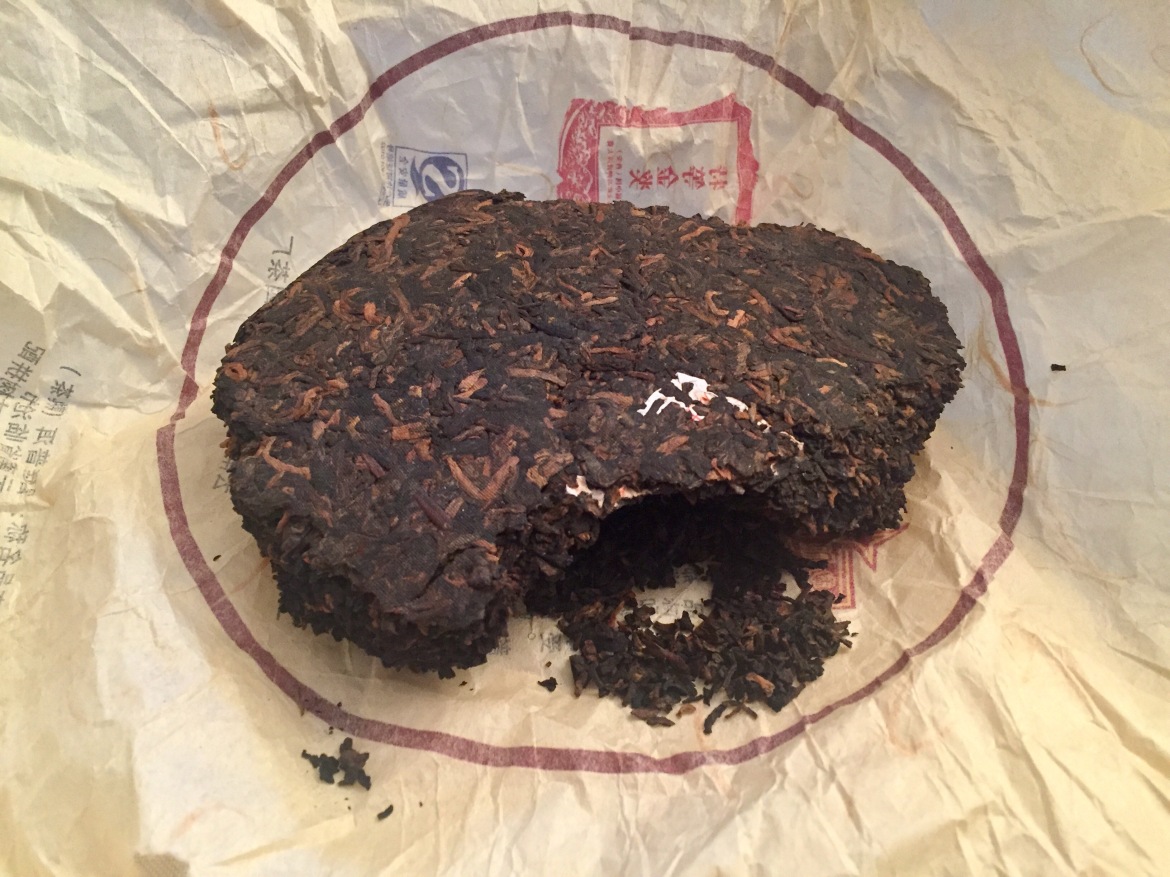
We also got to watch a beautiful flowering tea blooming! Flowering teas are made by binding young tea leaves and flowers together in a bulb then drying them. When steeped, the dried ball sink to the bottom of the pot and the leaves slowly unfurl, revealing the emerging flower in the center.
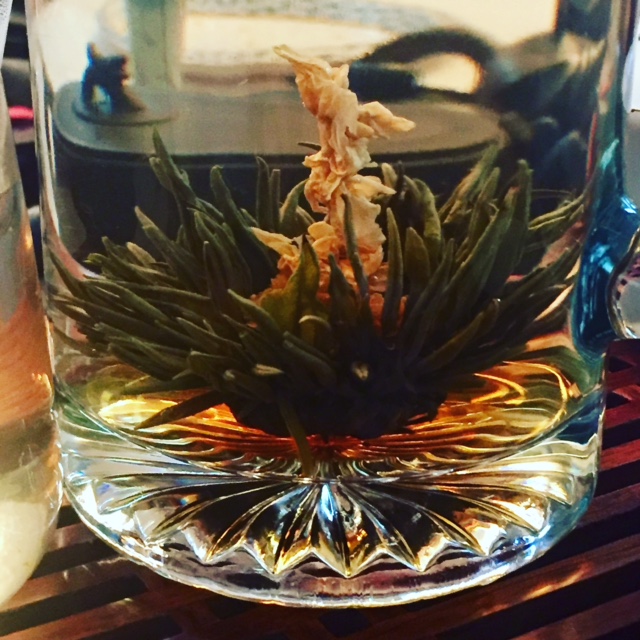
The first part of the presentation went from the lightest teas to the darker and more complex ones, so when we moved on to sampling Shehrish’s teas, I was ready for the smooth and sweet flavors which are typical for Pakistani teas. The pink tea below was my favorite one, typically served with milk, a bit of salt, sugar and crushed pistachio or other nuts. Shehrish explained that making pink tea requires time and patience: the pink coloration is a result of pouring the tea in and out of the pot to aerate the tea several times over the course of a few hours. The pink tea paired well with the light and crispy cardamom flavored Pakistani cookies brought fresh from Pakistan, to our luck.
These beautiful tea cups also came from Pakistan. In Pakistani culture, even the humblest or less fortunate people will likely take pride in owning a proper tea set to serve their guests, and guests are expected to accept a cup of tea when visiting a household. It made me think of that PTA board meeting at my house when Shehrish sat with her back to my dining room cabinet displaying our heirloom tea set, while I served her water in a regular glass… I did make Brazilian cheese bread and asked if anyone wanted coffee or tea, though, a nice welcome from a Brazilian point of view, I suppose.
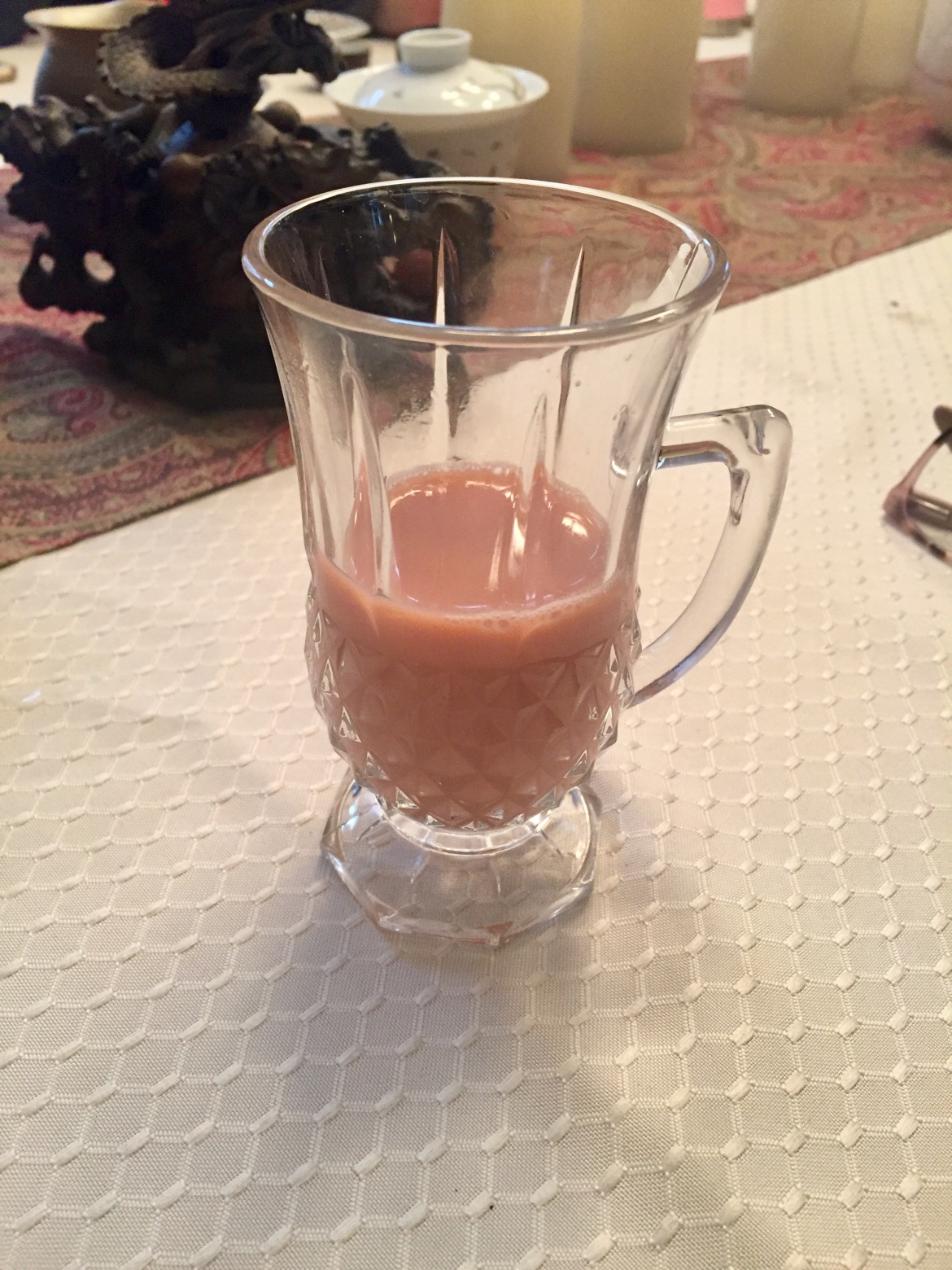
If you get really into tea, you should also know that the different types of tea require different water temperatures, steeping times and amounts of tea used for optimal flavor (which explains the sharpie numbers marked on the back of my very nice tea package from A.C. Perch’s…). I have been drinking lots of tea since last Sunday and I have been perfectly fine with the average of 1 teaspoon of tea per cup and about 5 minutes of steeping. If your cup of tea is too bitter or too bland, however, you may want to adjust the variables of your brewing method. This quick water temperature guide by The Spruce also references the steeping times for different types of tea. Just keep in mind that most tea types require water below boiling point, so turn off the stove when you see tiny bubbles form on the bottom of the pot of water.
In addition to providing hydration, tea contains antioxidants, which are associated with good physical and mental health including weight loss, the prevention of certain types of cancers and heart diseases and reducing the effects of anxiety and stress. I enjoy a good cup of coffee, but a cup of decaf coffee in the morning is all I need, while tea is the perfect healthy choice for the rest of the day.
Source: Hearts of Palm Tea Tasting with the PTA Hearts of Palm {$excerpt:n}